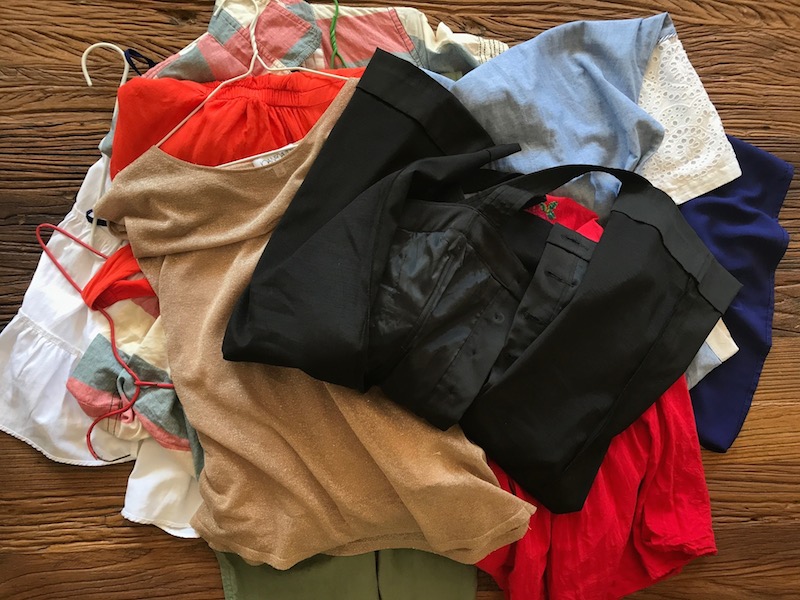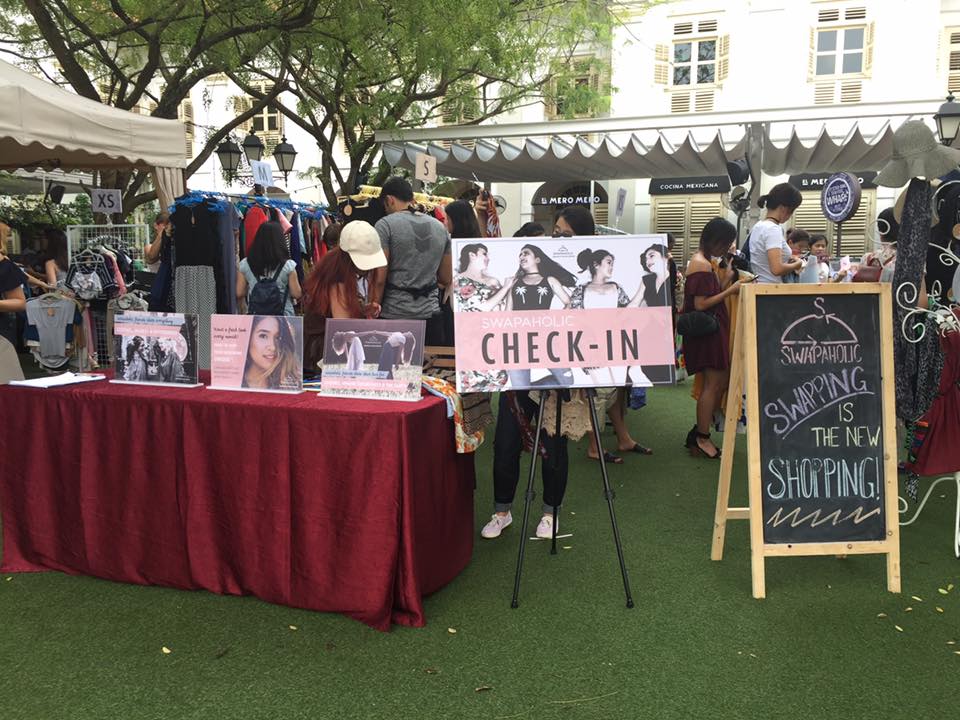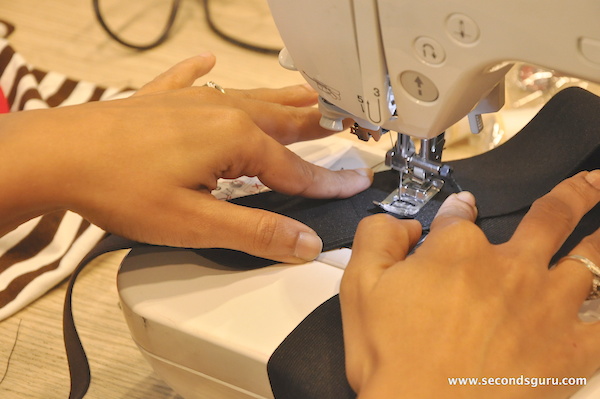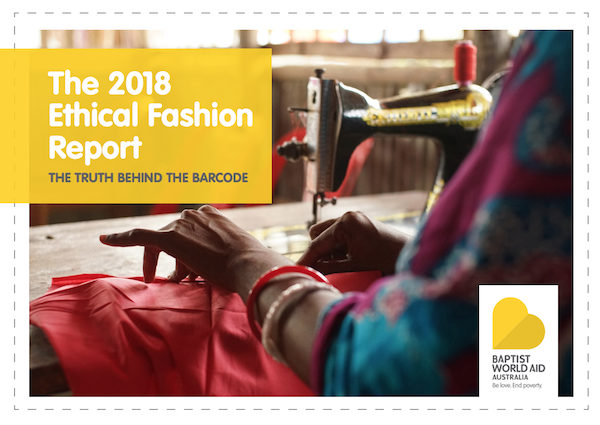Published 27 May 2018 ● Last Updated on 29 July 2020
Meet Sharmila Ganapathy, an ethical fashion blogger who is based in our friendly neighbouring country, Malaysia. We met Sharmila at a WWF youth event in Malaysia in 2017, and have loved her work ever since. So when she offered to write a piece on ‘How to style sustainably when you’re cash-strapped’ for our readers, we were thrilled. Check her blog Fashionably Kind for the latest on what’s happening in the sustainable/ ethical fashion space globally and in Malaysia. Over to Sharmila…
When you’re new to sustainable fashion, it can be an overwhelming experience. You wonder where to start if it’s best to take the ‘all or nothing’ approach and if the ‘veterans’ will judge you if you’re not doing enough to be sustainable.

You can, however, choose to make more sustainable choices when it comes to your wardrobe and in doing so, reduce your carbon footprint and fashion waste. The best part is, you can do this quite easily when you’re on a budget.
Let’s begin with some simple steps you can take to build a sustainable wardrobe[ Secondsguru’s insider tip: Follow them step-by-step to get the best results]:
1. Assess your wardrobe
The first thing I advise that you do is to remove all the clothes in your closet and lay them on your bed (or on a clean floor). Then divide them into three heaps: the ‘keep’ pile, the ‘discard’ pile and the ‘maybe’ pile.
The ‘discard’ pile is for clothes that no longer fit, are damaged or discoloured. Place all the clothes you haven’t worn in more than a year in the ‘maybe’ pile.
Once you’ve done this, take notes of the essential items of clothing that are missing from your ‘keep’ pile. What I mean when I say ‘essential’ is an item of clothing that is a wardrobe staple, such as a black skirt or solid-coloured cardigan that can be worn with other items of clothing.
Now take a look at the ‘maybe’ pile. Can you find essential items of clothing that you haven’t worn for sometime in this pile? Place them in the ‘keep’ pile. Next, figure out what you really want to keep in the ‘maybe’ pile, including pieces of clothing that can be tailored to fit better or combined with another item to create a new outfit.
Do the same for the ‘discard’ pile. Place the items that are in good, wearable condition into the ‘maybe’ pile to deal with later.

2. Organise a clothes swap
Launder and mend the clothes from your ‘maybe’ pile and organise a clothes swap party with your friends and their friends. This is a good way to fill in the gaps in your wardrobe and simultaneously ensure that your unwanted items of clothing find new homes.
For a successful swap party, invite friends with similar taste in clothing and preferably who are of a similar dress size as you. Invite at least eight to ten people; that way, everyone stands a better chance of going home with one item or more.
If you’re based in Singapore, check out Swapaholic the online platform in Singapore, which organises clothing swap events across the island all year around.

3. Buy preloved
Let’s say you’re done with the clothes swap and were unable to find the essential items of clothing you need to complete your wardrobe. Consider buying preloved clothes to fill this gap. This way you can stick to your clothing budget and you’ll reduce fashion waste as well.
So where does one go to buy preloved clothing in Singapore? Honeycombers has compiled an excellent resource in their article on where to thrift shop, which mentions places such as the New2U thrift shop and Salvation Army stores.
If you’d rather shop online, give the Refash website a go. The website also buys preloved clothes from conscious-minded fashionistas, so this is a good place to get rid of the wearable clothes from your ‘discard’ pile.
4. Repurpose and recycle
Assuming you’ve completed your wardrobe, now’s the time to salvage what you can from your ‘maybe’ and ‘discard’ piles. Do you have old t-shirts that you don’t want anymore? With a little creativity, you can turn them into bags, cushion covers or even a t-shirt dress if they are too loose-fitting for you. They only need basic sewing and crafting skills, so you create new from the old all by yourself.
Discoloured or damaged clothes can be turned into floor rags, or reusable mops. Get more ideas on how to repurpose old clothes from YouTube videos such as this.
If all else fails and you still have leftover fabric pieces, don’t let them end up in a landfill. Contact local startup Greensquare, which recycles fabric into industrial cleaning cloth.

5. Support ethical brands
Every once in a while, you may feel like splurging and adding new pieces to your wardrobe. And that is totally fine! When you do indulge, do try buying from local brands that are ethical in terms of their environmental and social impact, as opposed to spending your precious dollars on designer brands whose ethics or sustainability are suspect. Want to see a report card for your favourite high street/ luxury brand? Drop us an email on admin@secondsguru.com and we will be happy to share the latest Fashion Report by Baptist World Aid, Australia with you.
Connected Threads Asia has an excellent directory of Singapore-based ethical brands you can shop at, as well as places you can thrift shop at and learn to repurpose or mend your clothes. Visit the directory here.
If you’re shopping foreign ethical brands for wardrobe basics or classic pieces, get a group of friends to shop with you to save on shipping and delivery costs. Examples of foreign ethical brand retailers that ship internationally are The Third Estate and Thread Harvest.

To sum to up– Remember that the buck starts with you, so make the right choices and you’ll find that it is possible to have a timeless, as well as sustainable, wardrobe when you’re on a budget. Every contribution helps and so does yours. At the end of the day, you only have to be accountable to yourself, so make what you do matter.
– Sharmila Ganapathy



0 Comments